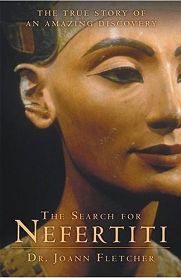
Удивителен разказ за работата на британската египтоложка от Йоркския университет Джоан Флечър (р. 1966) в Долината на царете и Египетския музей в Кайро през 2003 и за нейния разтърсващ доклад, че е открила мумията на самата царица Нефертити, съпруга на великия фараон -реформатор Ехнатон (Аменхотеп IV) в групова находка на мумии от гробницата KV 35 (на Аменхотеп II, използвана впоследствие като скривалище на царски мумии).
Спонсорираният от Discovery Channel екип, в който има и съдебен антрополог обследва детайлно мумия, наречена "По-младата дама" (KV35YL или 61072), открита през 1898 от френския египтолог Виктор Лоре. Различни признаци, като наличието на перука (признак за принадлежност към царската фамилия) и най-вече ДНК тест показващ, че дамата е дъщеря на фараона Аменхотеп III и неговата съпруга царица Тейе карат екипа да направи заключение, че това е легендарната съпруга на Ехнатон- Нефертити (главна съпруга ан фараона да бъде сестра му е традиционният обичай в Древен Египет).
Новината, оповестена от екипа среща своите яростни опоненти, сред които е и тогавашният всесилен министър на древностите д-р Захи Хауас и е упорито оспорвана от множество специалисти.
Въпреки това, хипотезата продължава да има своите горещи привърженици в научните среди и да вдъхновява археолозите, че дори и днес все още в Долината на царете могат да се правят поразяващи открития.
Joann Fletcher - The Search for Nefertiti. The true story of an
amazing discovery, New York, William Morrow, 2004 - на английски език, от Google Docs,формат PDF. Сваляне с ляв бутон (downloading by left button) от страницата на предоставящия сървър, после през бутона стрелка
надолу/after by down arrow button.
| 
